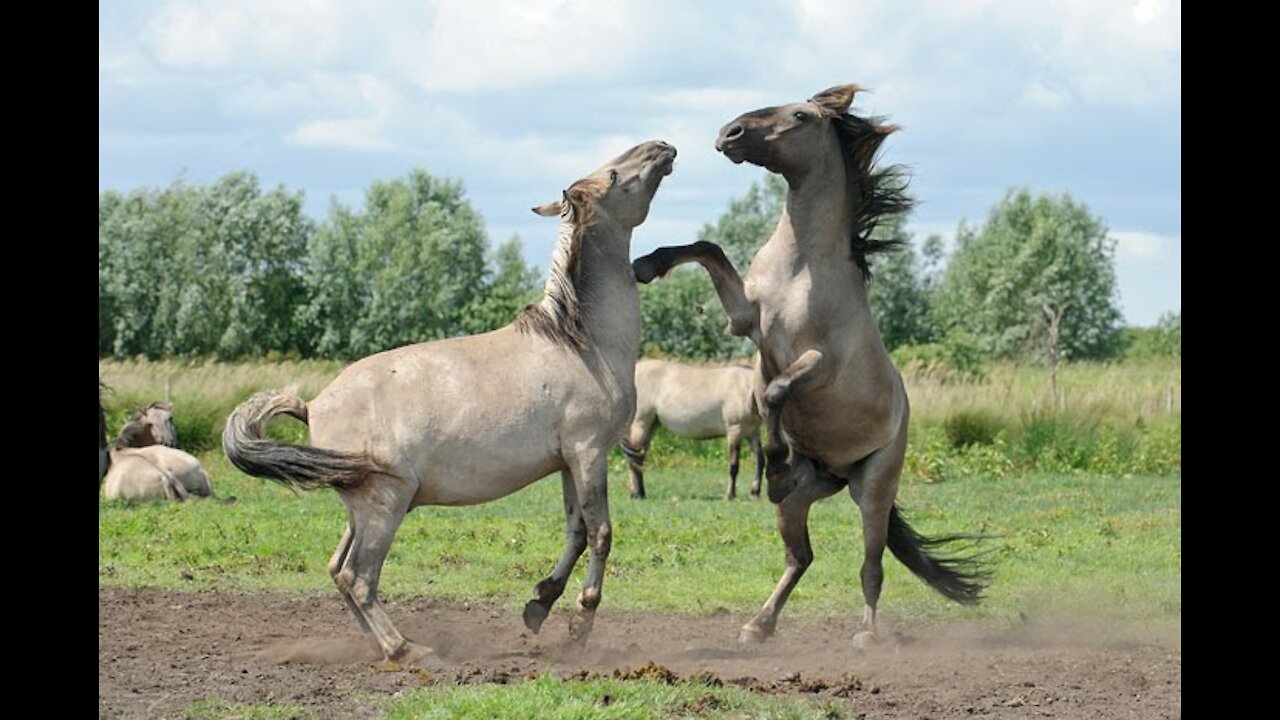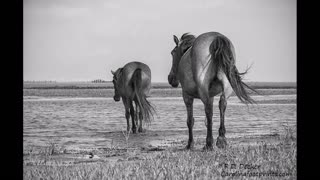Premium Only Content

The Wild horses: Rewild in UK
Missing Species >
Wild Horses
The domestication of horses that started around 3500 BC (Kavar and Dovc, 2008) lead to the decline of feral horse populations and subsequently less numbers in the open plains of The UK and Europe. Horses prefer open grassland environments where their diet would consist of grass, herbs and shrubs. The introduction of a new species of horse for the wild can be done by various methods.
Conservation Plans
The reintroduction of the Dartmoor, Exmoor, Konik, Welsh and Eriskay pony in the UK. Achieved by choosing the right breeds and characteristics of existing horses as some primitive horses have the old European horse genome.
Domesticated horses should not be used before they have lived a semi-feral lifestyle. This allows for the adaptation of local circumstances (Terrain, weather, seasons) to overcome the maladaptation.
Cross Breeding between different populations broadens the genetic diversity (thus fitness for survival). This could ensure the resilience of reintroducing wild horse populations.
At Ham Fen and Stodmarsh In 2002, Wildwood, together with English Nature and Kent Wildlife Trust, imported two herds of Konik horses from Holland to manage the wetlands of Stodmarsh and Ham Fen. This was a move to restore a native species to Kent, where big grazers originally shaped the British countryside. They have been introduced to fenland to manage the area by grazing and trampling.
-
 0:12
0:12
Funny and Cute Animals
3 years agoWild horses #1
371 -
 5:41
5:41
Al Brassell
4 years agoWild Horses - The Rolling Stones
119 -
 3:37
3:37
RDDPhoto
3 years agoWild Horses of the Crystal Coast
30 -
 LIVE
LIVE
We Like Shooting
16 hours ago $0.03 earnedWe Like Shooting 596 (Gun Podcast)
329 watching -
 54:43
54:43
Kimberly Guilfoyle
9 hours agoThe Trump Effect: Mexico Folds, Live with Dinesh D’Souza & Chuck DeVore | Ep.193
94.8K32 -
 1:20:47
1:20:47
Redacted News
7 hours agoMexico CAVES to Trump over tariffs, USAID Shutdown, & Zelensky loses $200 billion | Redacted Live
172K420 -
 1:02:29
1:02:29
The StoneZONE with Roger Stone
4 hours agoIs GOP Sen. Bill Cassidy Playing Politics with RFK Jr. Vote as U.S. Faces Public Health Crisis?
27.9K5 -
 1:10:30
1:10:30
BIG NEM
7 hours ago📢 THE JOLLOF-OFF: The Battle for West African Cuisine! 🇳🇬🔥🇬🇭
27.3K4 -
 54:58
54:58
LFA TV
1 day agoThe Trade War Begins | TRUMPET DAILY 2.3.25 7pm
53.4K27 -
 11:08
11:08
Tundra Tactical
7 hours ago $0.32 earnedDead Air Silencers 10 YEARS of INNOVATION!
31.4K1